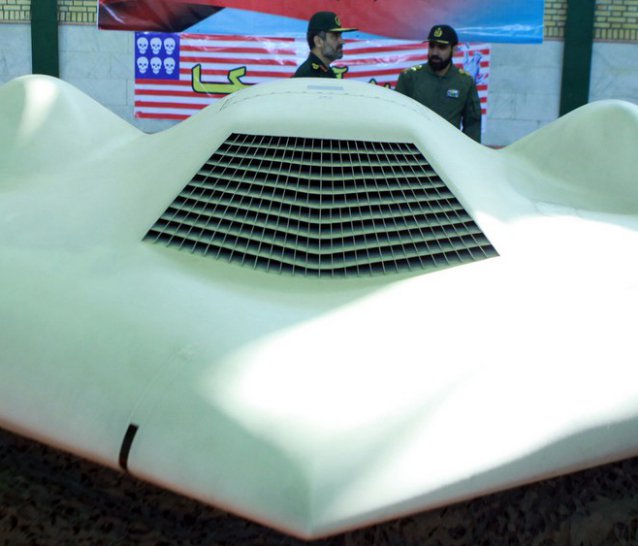The US Government is asking Iran to return the Lockheed Martin-built RQ-170 Sentinel that was recently downed over that country.
“We’ve asked for it back. We’ll see how the Iranians respond,” President Obama said Monday during a news conference at the White House with Iraqi Prime Minister Nouri al-Maliki.
Obama’s statement is the first official confirmation that the stealthy high-altitude spy plane had been captured by Iran. Earlier, the Pentagon had only officially acknowledged that an unmanned aircraft of an unspecified type was missing over western Afghanistan.
Iranian officials have already stated that they will not return the captured aircraft and have promised to reverse-engineer the jet’s technology.
Analyst Dan Goure of the Lexington Institute in Arlington said that there is no chance that Iran will return the Sentinel to the US Nor does Obama have any legal grounds to ask for such a return. “I’m a little puzzled as to why he even bothered,” he said.
Retired Air Force Lt. Gen. Jack Rives, a former Judge Advocate General, said that the US was within its rights to ask for the return of the RQ-170 if the aircraft accidentally strayed into Iranian territory.
“We’re not at war with the Iranians,” Rives said. “When we’re in our current conditions with them, this was an accident, it was a malfunction, the plane went down, it was our plane, there is no question over that. So it’s just a common sense request under international law.”
He said Iran has an obligation to return the aircraft, assuming it was operating in either international airspace or western Afghanistan with the consent of that nation’s leadership.
“They actually don’t have a right to keep it, it’s ours,” he said. “It did land on their land, and if it caused damage we’d reimburse them for the cost of the damage, but in terms of who owns the aircraft, there is no question it’s ours.”
However, the case becomes less clear if the Sentinel was intentionally overflying Iranian airspace, Rives said. The aircraft looked like it had suffered damage consistent with a wheels-up landing, he said.
Another source familiar with remotely piloted aircraft operations said that the RQ-170 is programmed to hold an orbit if it loses its command link and try to re-establish contact. However, if it begins to run out of fuel, it will divert to a nearby airfield if it can’t return to base.
This may be what caused the aircraft to land inside Iran, the source said. The Northrop Grumman RQ-4 Global Hawk has a similar feature, which has proven a bone of contention between the Air Force and the Federal Aviation Administration.
However, that explanation can’t account for the Sentinel’s loss, Goure said.
“Even if they had lost control of it, it should have had enough fuel to go home,” he said. “So that still doesn’t explain what went wrong.”
Goure said that it’s still most likely that the aircraft suffered a catastrophic malfunction, enough so that it couldn’t communicate or return home. The only other possibility is that it could have come under attack via cyber or electronic means.
While a cyber attack is some possibility, the system failure could have been caused externally by electronic attacks, Goure said. “That’s still a possibility,” he said. “It’s possible the Iranians did something.”
Source: Army Times


The President should ask the contractor for our money back.